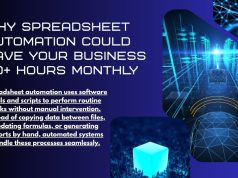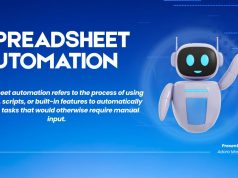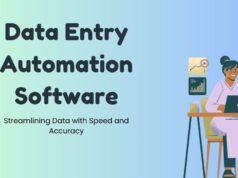Excel spreadsheets run millions of businesses around the world, but updates the data manually, creating a report and display of repeated tasks can consume valuable time for valuable time. Automation converts these timing processes into effective, flawless operations running with minimal human intervention.
Learning how to automate the Excel spreadsheet can revolutionize your workflow, reduce errors and empty time for strategic work. This comprehensive guide will make you run from basic underlying features to advanced programming solutions through different automation techniques.
Understanding Excel Automation Basics
Excel Automation has asked to use the underlying tools, formulas and programming languages to automatically perform features. Instead of manually entering data, copying formulas or generating reports, you can set systems that handle these operations without continuous supervision.
The benefits of Excel automation are outside the savings time. Automatic processes reduce human errors, ensure stability in the dataset and activate real -time data processing. Organizations that use Excel automation often see significant improvements in productivity and data accuracy.
Types of Excel Automation
Excel provides several automation methods, each is compatible with questions about different complexity levels and use:
The formula -based automation uses the underlying tasks of Excel to automatically calculate and manipulate data. This approach works well for direct tasks such as dataaverification, conditional formatting and basic calculations.
Macro utilizes Visual Basic for applications (VBA) to record and resume complex sequences of automation action. Macrose can handle duplicate features, data formatting and multi -step processes that will be manually teduned.
External automation combines Excel with other applications and databases via API, web query and third-party tools. This method allows real -time data synchronization and complex work flight automation.
Getting Started with Built-in Automation Features
Excel provides powerful built-in features that require no programming knowledge. These tools form the foundation of most automation strategies and can handle many common business tasks.
Dynamic Formulas and Functions
Modern Excel versions include dynamic array functions that automatically adjust to changing data ranges. Functions like XLOOKUP, FILTER, and SORT can create self-updating reports that respond to new data inputs.
The XLOOKUP function replaces traditional VLOOKUP with more flexible search capabilities. It can search in any direction, return multiple values, and handle exact or approximate matches with greater precision.
FILTER functions create dynamic subsets of data based on specified criteria. When source data changes, filtered results update automatically, eliminating the need to recreate reports manually.
Conditional Formatting Automation
Conditional formatting rules automatically highlight cells based on their values, making it easy to identify trends, outliers, and important data points. These rules update in real-time as data changes.
Data bars, color scales, and icon sets provide visual representations of data patterns without manual formatting. These features help stakeholders quickly understand information without analyzing raw numbers.
Data Validation and Input Controls
Data validation rules ensure data consistency by restricting input types, ranges, and formats. These controls prevent errors at the source and maintain data quality across spreadsheet automation.
Drop-down lists, input messages, and error alerts guide users through data entry processes while maintaining standardization. This approach reduces training time and improves data accuracy.
Advanced Automation with Macros and VBA
Visual Basic for Applications (VBA) unlocks Excel’s full automation potential. While it requires some programming knowledge, VBA can automate virtually any Excel task.
Recording Your First Macro
The macro recorder captures your actions and converts them into VBA code. This feature provides an excellent starting point for automation projects and helps beginners understand VBA syntax.
To record a macro, access the Developer tab (enable it through Excel Options if not visible), click “Record Macro,” perform your desired actions, then stop recording. The generated code can be edited and enhanced for greater functionality.
Common VBA Automation Tasks
Data import and export routines can automatically pull information from external sources, process it according to business rules, and distribute results to stakeholders. These processes can run on schedules or trigger based on specific events.
Report generation macros compile data from multiple sources, apply formatting, create charts, and distribute finished reports via email or shared folders. This automation eliminates manual report creation and ensures consistency.
Data cleaning and transformation scripts identify and correct common data issues like duplicate entries, formatting inconsistencies, and missing values. These routines improve data quality and reduce manual cleanup time.
Error Handling and Debugging
Robust automation includes error handling to manage unexpected situations gracefully. VBA’s error handling capabilities prevent crashes and provide meaningful feedback when issues occur.
Debugging tools help identify and resolve code problems during development. The VBA editor includes breakpoints, watch windows, and step-through capabilities that simplify troubleshooting.
Connecting Excel to External Data Sources

Modern business environments require real-time data integration from multiple sources. Excel’s connectivity features enable automatic data refresh and synchronization.
Database Connections
Excel can connect directly to SQL databases, enabling real-time data analysis without manual imports. These connections support parameterized queries and automatic refresh schedules.
ODBC and OLE DB connections provide access to various database systems including MySQL, PostgreSQL, and Oracle. Connection strings and authentication methods ensure secure data access.
Web Data Integration
Power Query transforms Excel into a powerful data integration platform. This tool can extract data from web pages, APIs, and cloud services with minimal technical setup.
Web queries automatically refresh data from online sources, ensuring reports always reflect current information. Authentication methods support secure connections to protected data sources.
Cloud Service Integration
Excel integrates seamlessly with cloud platforms like SharePoint, OneDrive, and Microsoft 365. These connections enable collaborative automation and centralized data management.
API connections allow Excel to interact with third-party services like CRM systems, marketing platforms, and financial applications. These integrations create comprehensive business intelligence solutions.
Power Automate and Modern Automation Tools
Microsoft Power Automate extends Excel automation beyond traditional boundaries. This cloud-based platform connects Excel with hundreds of other applications and services.
Creating Automated Workflows
Power Automate workflows can trigger Excel operations based on external events like email arrivals, file uploads, or database changes. These workflows eliminate manual intervention and ensure timely processing.
Template galleries provide pre-built automation scenarios for common business processes. These templates can be customized to match specific organizational needs and requirements.
Integration with Other Microsoft Tools
Power Automate connects Excel with Teams, Outlook, SharePoint, and other Microsoft applications. This integration creates seamless workflows that span multiple platforms and tools.
Notification systems can alert stakeholders when automated processes complete, encounter errors, or require attention. These alerts ensure proper oversight while maintaining automation benefits.
Best Practices for Excel Automation
Successful Excel automation requires careful planning and adherence to best practices. These guidelines help ensure reliable, maintainable automation solutions.
Documentation and Version Control
Comprehensive documentation explains automation logic, dependencies, and maintenance requirements. This information helps other users understand and maintain automated systems.
Version control systems track changes to automated spreadsheets and code. This practice prevents accidental overwrites and enables rollback when issues occur.
Testing and Validation
Thorough testing ensures automation works correctly across different scenarios and data sets. Test cases should include edge cases, error conditions, and performance benchmarks.
Validation routines verify that automated processes produce expected results. These checks catch issues early and maintain confidence in automated systems.
Security and Access Control
Automation often involves sensitive data and critical business processes. Proper security measures protect against unauthorized access and data breaches.
Password protection, file encryption, and access restrictions ensure that only authorized users can modify automated systems. Regular security reviews help maintain protection levels.
Taking Your Excel Automation to the Next Level
Excel changes automation how organizations handle data and reporting. By starting with the underlying features and gradually incorporating advanced techniques, you can create powerful automation solutions that save time, reduce errors and improve the decision.
The key to successful automation lies in understanding your specific requirements, choosing appropriate tools and following best practices for implementation and maintenance. Start with simple automation projects, document your processes thoroughly, and gradually expand your abilities when you gain experience.
Consider automatically detecting the power for cloud-based workflows, learn VBA for complex customized solutions, and check third-party ad-in that expands Excel’s opportunities. With these devices and techniques you can create automation solutions that provide important business value and competitive advantage.










